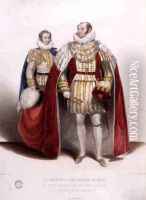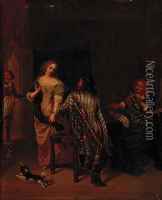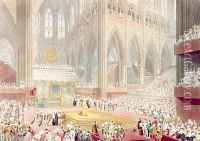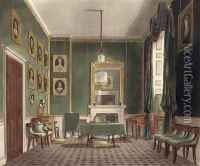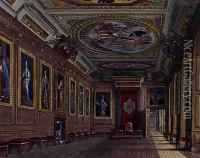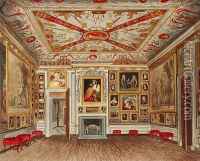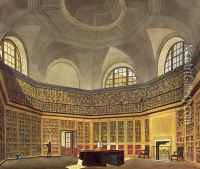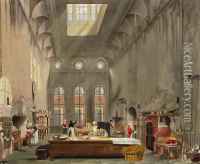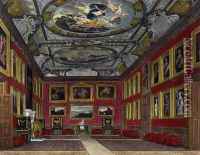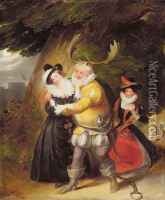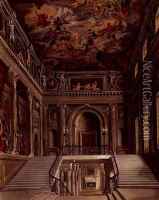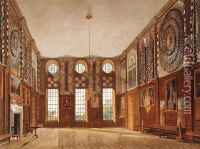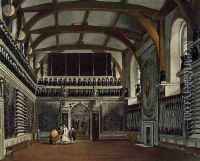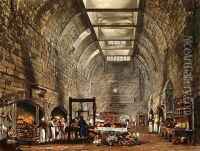James Stephanoff Paintings
James Stephanoff was an English painter and illustrator who was active in the late 18th and early 19th centuries. Born in 1788, he became known for his watercolor paintings and was associated with the early-Victorian art scene. Although not as widely recognized as some of his contemporaries, Stephanoff contributed significantly to the period's cultural landscape.
Stephanoff's early life is not extensively documented, but it is known that he was one of two sons of the Russian-born painter Alexander Stephanoff. His brother, Francis Philip Stephanoff, was also a painter. This artistic environment undoubtedly influenced James and helped shape his career in the arts.
Throughout his career, James Stephanoff was involved with several important cultural institutions in Britain. He was appointed as a Painter in Water Colours to King William IV and Queen Victoria, which was a significant recognition of his abilities. Additionally, he was an active member of the Society of Painters in Water Colours, now known as the Royal Watercolour Society, and exhibited his works there over many years.
Stephanoff's paintings often depicted historical and literary scenes, and he was well-regarded for his ability to capture these subjects with a detailed and narrative-driven approach. Some of his works include illustrations for books, such as Shakespeare's plays and the 'History of the Rebellion of 1745'. His illustrations were appreciated for their vividness and attention to historical accuracy.
Despite his contributions, James Stephanoff did not achieve the same level of fame as some of his contemporaries like J.M.W. Turner or John Constable. Nevertheless, his works are valuable for their historical depictions and for offering insight into the artistic preferences and techniques of the early 19th century.
James Stephanoff's later years saw him continue to work and exhibit, but over time, his style became less fashionable, and his prominence in the art world diminished. He passed away in 1874, leaving behind a body of work that, while perhaps not as celebrated as that of some of his peers, remains an important part of the British art historical record.
